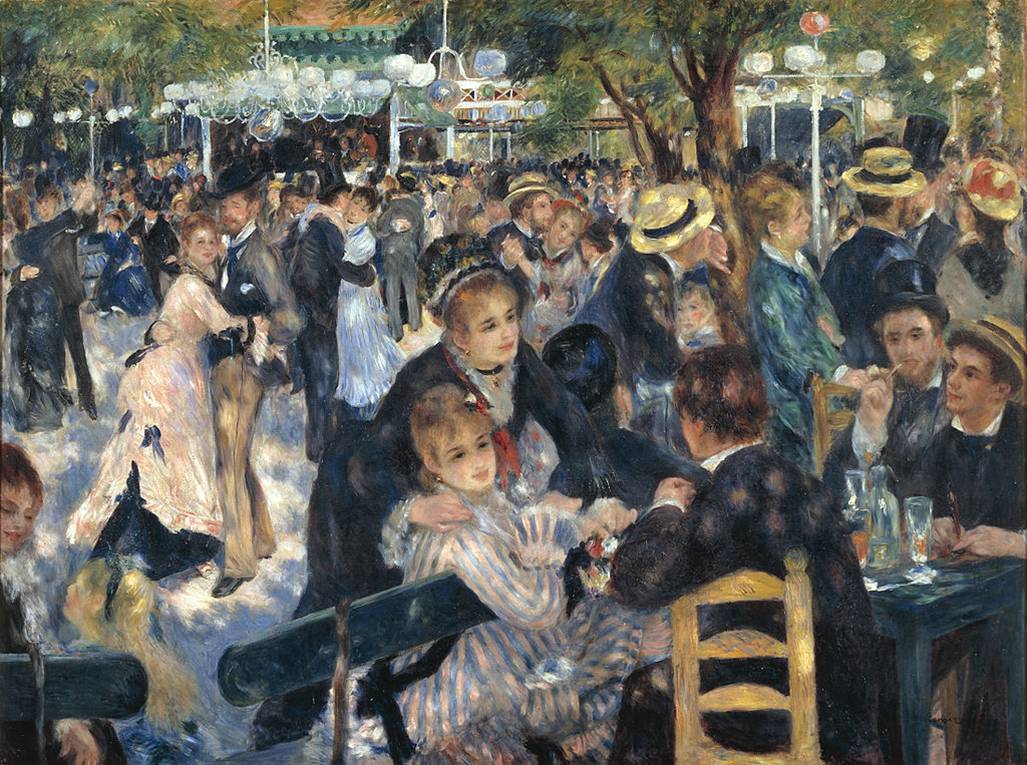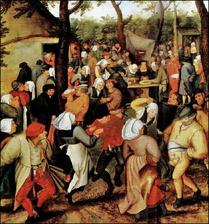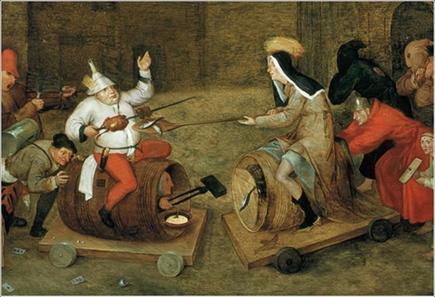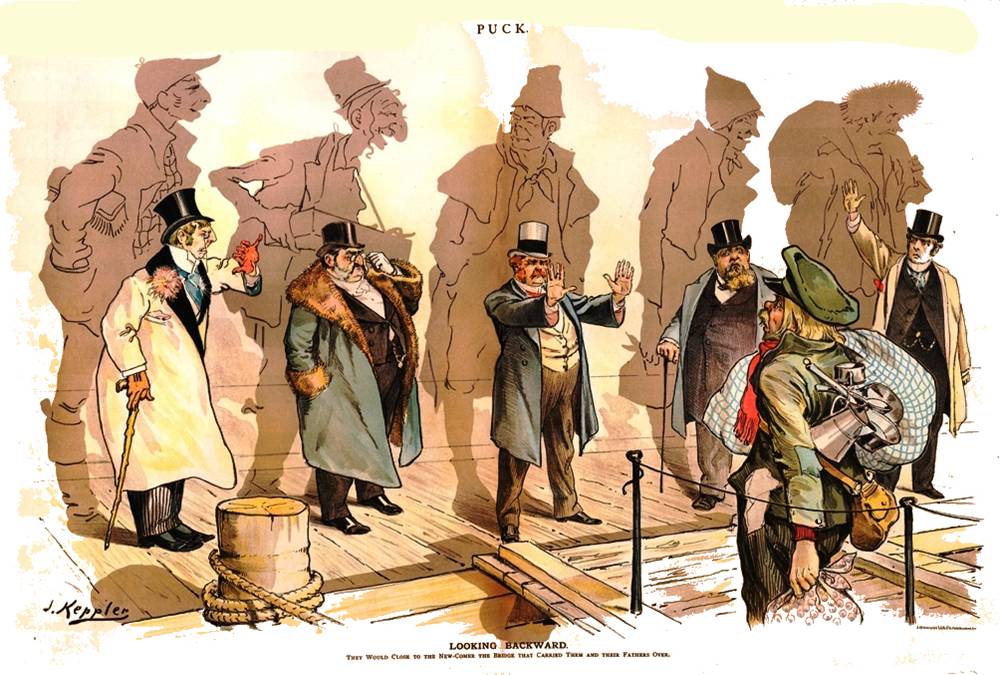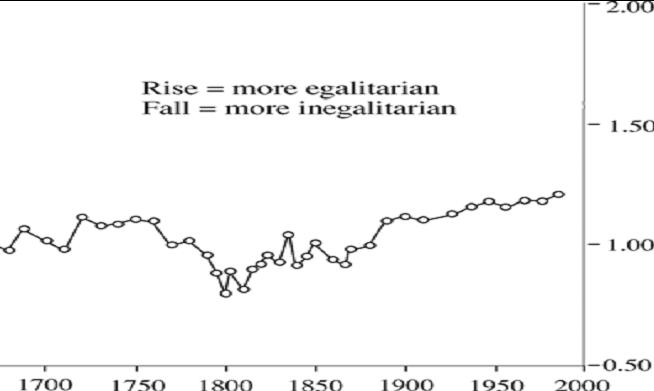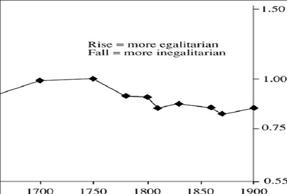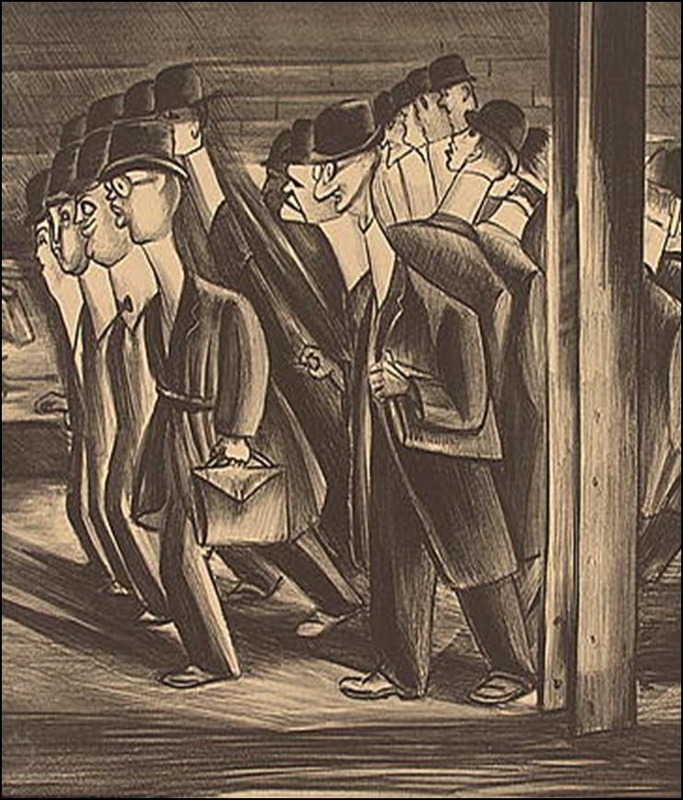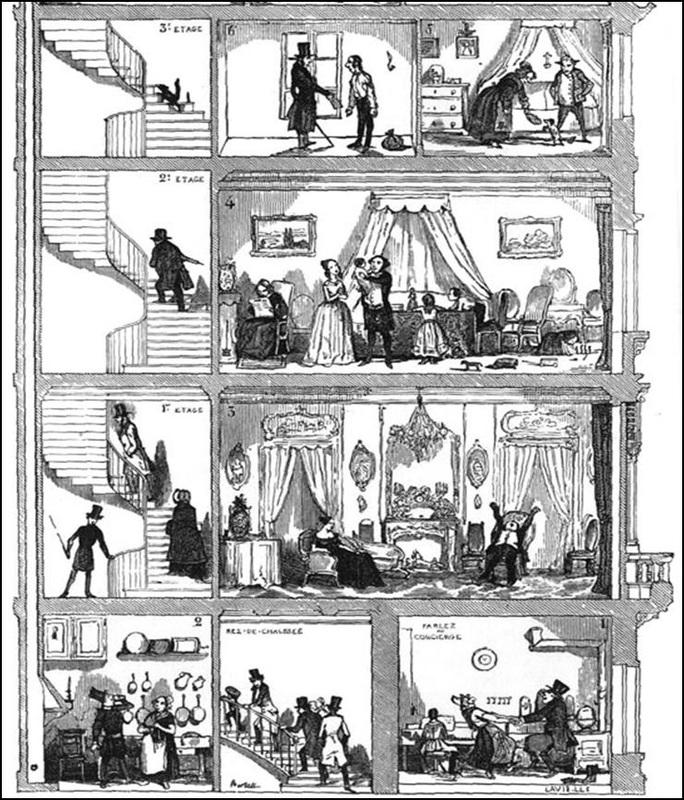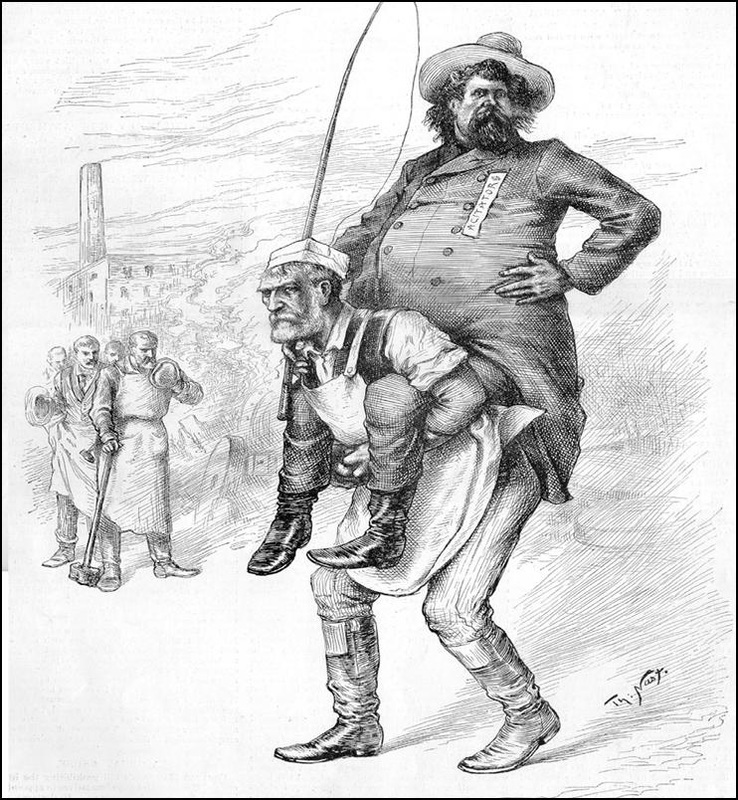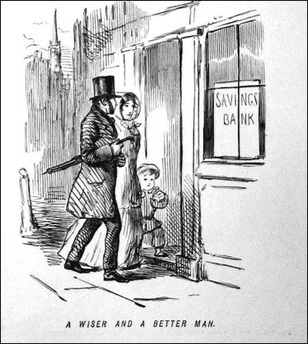"The Classes"
How did Industry affect the classes? Their creation? Stereotype? Divisions? Let's see.
We're starting to see that Industry created a "class consciousness". Just by observing one's dress, language, or even the way they walk...one can see the "class" to which one belonged. Simply compare a "party" of the upper class (above) to that of the lower class (below). Yes, the lower classes usually got drunk and rode around breaking things!
The chief irony of "class consciousness", as illustrated in the cartoon below, was that, yes, Industry created classes, but it also created "hypocrisy": most classes seemed to have "forgotten" from where they came!
Industry brought money, and unfortunately, brought an increase in the "income gap". The graphs below show that the income gap in both England and France actually increased; one might expect that, with more money, there'd be more to "go around". This simply wasn't the case.
Industry created money. Money created classes. And classes created variance. The "middle class" (those who now had a bit money to spend) divided themselves subsequently based on how much money they had to spend:
- "Upper Middle" Class: 20% of the "middle class" and receives 60% of the middle class’ income…
- “Middle Middle" Class: 20% of the "middle class" that differentiates itself within this class based on “displayed” interests (apartment living, travel, food and clothing)
- "Lower Middle" or “Working Class”: 60% of the "middle class" that divided itself between the skilled and unskilled workers. The so called “labor aristocracy” consisted of the highly skilled, construction bosses, factory foremen and "special skilled"
